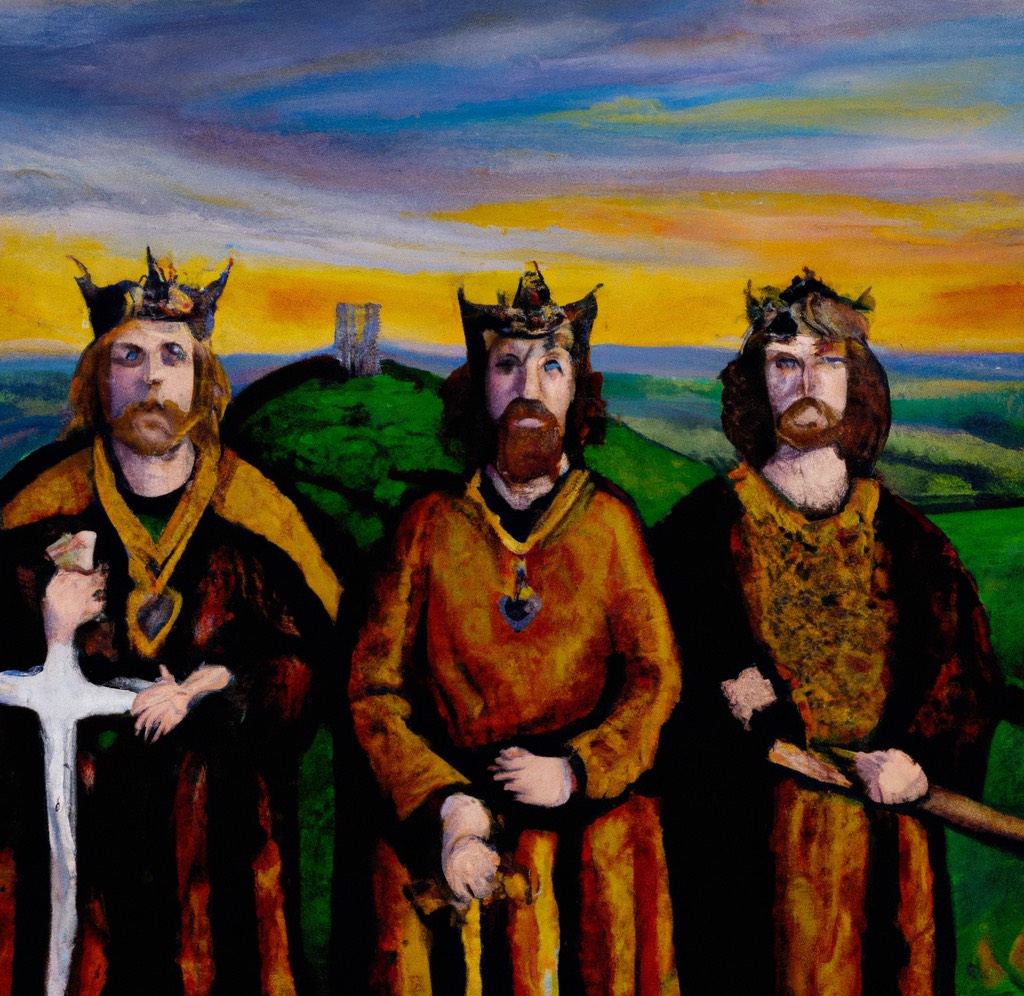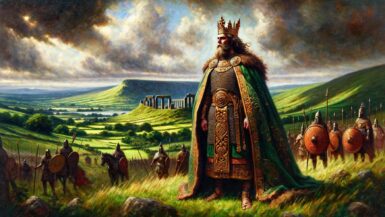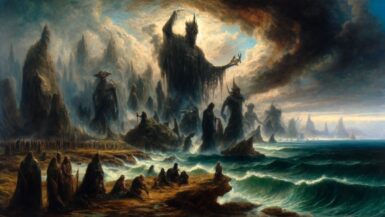The Kings’ Cycle, also known as the Historical Cycle, is one of the four major cycles of Irish mythology. This cycle focuses on the semi-historical tales of the legendary High Kings of Ireland and their exploits, exploring the intersection between myth and history. In this article, we will delve into the history of the Kings’ Cycle, its main characters, and the significance of its stories in Irish culture and folklore.
The Kings’ Cycle: An Overview
Four Cycles of Irish Mythology
Irish mythology is traditionally divided into four major cycles: the Mythological Cycle, the Ulster Cycle, the Fenian Cycle, and the Kings’ Cycle. Each of these cycles is a collection of tales, myths, and legends that explore different aspects of ancient Irish history, culture, and society.
The Kings’ Cycle’s Role
The Kings’ Cycle primarily focuses on the legendary High Kings of Ireland, their reigns, and their adventures. These stories blend mythology with historical events, exploring the lives and deeds of the High Kings, their relationships with other powerful figures, and the challenges they faced during their rule.
The High Kings of Ireland: Myth and History
The Concept of the High King
The High King, or Ard Rí, was a symbolic figure in ancient Irish society, representing the unity and sovereignty of the island. Although some historical High Kings of Ireland were real figures, many others were legendary or semi-historical, their stories embellished and transformed by the passage of time and the influence of myth.
The Annals of the Four Masters
The Annals of the Four Masters, a chronicle compiled in the 17th century by a group of Franciscan scholars, is one of the primary sources for the Kings’ Cycle. This work records the reigns and exploits of the High Kings of Ireland, weaving together myth, legend, and historical fact to create a rich tapestry of Irish history.
The Legendary High Kings and Their Tales
Labraid Loingsech
Labraid Loingsech, also known as Labraid the Mariner, was a legendary High King who ruled in the 5th or 6th century. He was exiled to Gaul as a child due to political strife but later returned to Ireland with a powerful army to reclaim his throne. Labraid’s story highlights the theme of the exiled king returning to claim his birthright, a common motif in Irish mythology.
Niall of the Nine Hostages
Niall of the Nine Hostages, who ruled in the late 4th or early 5th century, was a powerful High King known for his military prowess and numerous conquests. He was said to have taken hostages from each of the nine regions he conquered, earning him his epithet. Niall is considered the founder of the Ui Neill dynasty, which would dominate Irish politics for centuries.
Conn of the Hundred Battles
Conn of the Hundred Battles, who ruled in the 2nd century, was a legendary High King who fought numerous battles to defend and expand his kingdom. His reign was marked by prosperity and the establishment of the royal site of Tara. Conn’s exploits and achievements have become emblematic of the idealized High King in Irish mythology.
Cormac Mac Airt
Cormac Mac Airt, who ruled in the 3rd century, was a wise and just High King, known for his adherence to the principles of justice, law, and wisdom. His reign was considered a golden age of peace and prosperity, and his judgments and laws were highly respected. Cormac’s story emphasizes the importance of wisdom, justice, and good governance in the role of a High King.
Lugaid Mac Con
Lugaid Mac Con, who ruled in the 2nd century, was a controversial High King known for his tumultuous reign and ultimate downfall. After gaining the throne through deceit and treachery, Lugaid faced numerous challenges, including rebellions and invasions. His eventual demise serves as a cautionary tale about the consequences of gaining power through dishonest means.
Tales of Intrigue, Adventure, and Romance
The Wooing of Etain
One of the most famous tales in the Kings’ Cycle is the Wooing of Etain, a love story involving the High King Eochaid Airem, his wife Etain, and a jealous rival, Midir the Proud. This complex tale weaves together themes of love, betrayal, and transformation, ultimately resulting in a tragic and poignant conclusion.
The Death of Conaire Mor
The Death of Conaire Mor tells the story of the High King Conaire Mor, who ruled in the 1st century, and his tragic fate. Conaire’s reign was marked by peace and prosperity, but his downfall was brought about by his own hubris and violation of sacred taboos. The story serves as a reminder of the importance of respecting tradition and the limits of power.
The Adventures of Art Mac Conn
The Adventures of Art Mac Conn, son of the High King Conn of the Hundred Battles, is a collection of tales detailing the exploits and adventures of the young prince. These stories emphasize the importance of courage, cunning, and resourcefulness in the face of adversity and often serve as a coming-of-age narrative for the young hero.
The Kings’ Cycle in Irish Culture and Folklore
Oral Tradition and Literature
The tales of the Kings’ Cycle have been preserved and transmitted through generations by means of oral tradition and the efforts of scribes who recorded the stories in manuscripts. The earliest surviving manuscripts containing Kings’ Cycle tales date back to the 12th century, but the stories themselves are believed to have originated much earlier.
The Kings’ Cycle as Inspiration
The stories and characters of the Kings’ Cycle have inspired numerous works of literature, art, music, and theater throughout history, both in Ireland and abroad. From the epic poems of the 12th century to modern adaptations and reinterpretations, the tales of the legendary High Kings of Ireland continue to captivate and inspire generations of artists and audiences.
The Kings’ Cycle and National Identity
The Kings’ Cycle has played a significant role in shaping Irish national identity and cultural heritage. The tales of the High Kings of Ireland embody the ideals of sovereignty, unity, and the rule of law, which are deeply rooted in Irish tradition. The stories have been embraced as symbols of national pride and have influenced the development of Irish nationalism and the struggle for independence.
The Kings’ Cycle and the Study of Irish Mythology
The Kings’ Cycle as a Reflection of Ancient Irish Society
The stories of the Kings’ Cycle provide valuable insight into the values, beliefs, and social structures of ancient Irish society. The tales emphasize the importance of leadership, justice, and the preservation of order, reflecting the ideals and aspirations of a society that celebrated its rulers and leaders. By studying the Kings’ Cycle, we can gain a deeper understanding of the cultural influences that have shaped the unique identity of Ireland and its people.
The Kings’ Cycle and the Evolution of Irish Mythology
The Kings’ Cycle represents a significant stage in the evolution of Irish mythology, bridging the gap between the earlier cycles, such as the Mythological, Ulster, and Fenian Cycles, and the later historical accounts of Ireland. The stories in the Kings’ Cycle demonstrate a growing emphasis on the blending of myth and history, as well as a shift in focus from the exploits of individual heroes to the actions of rulers and the consequences of their decisions. This evolution reflects the changing priorities and concerns of Irish society during the period in which the Kings’ Cycle was composed and transmitted.
The Kings’ Cycle in Comparative Mythology
The Kings’ Cycle, like the other cycles of Irish mythology, offers a rich resource for the study of comparative mythology. The stories and themes of the Kings’ Cycle share similarities with the mythologies of other cultures, such as the legendary kings of Britain and the epic tales of the ancient Greeks and Romans. By exploring these connections and parallels, we can gain a deeper appreciation of the universality of myth and its role in expressing the shared experiences, aspirations, and concerns of human societies throughout history.






Leave a reply